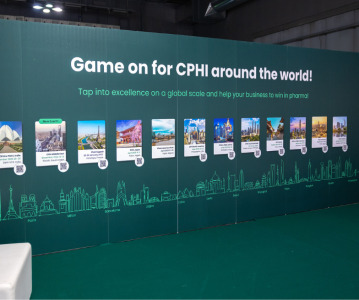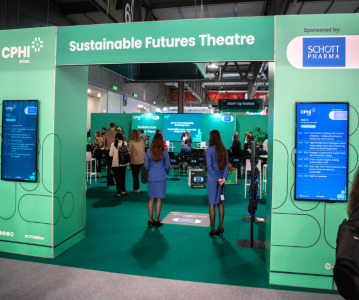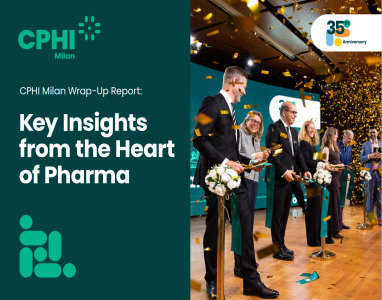CPHI India Report identifies two-tier manufacturing market and predicts increased acquisitions

CDSCO certification has improved international repute of India, but domestic companies call for urgent Government support to invest in API facilities.
CPHI releases the findings the 2017 India Pharma Market Report, which identified a two-tier manufacturing market and forecast increased acquisitions by Indian companies, along with a notable improvement in the international reputation of Indian made pharmaceuticals. But perhaps most dramatically, a large majority of domestic companies called for urgent Government support to invest in API sites.
The report, which consolidated opinions from 500 domestic and international companies, identified four main areas in which Indian pharma companies are investing – with 50% raising funds this year for ‘commercial scale and scale-up facilities’; around one third for ‘continuous processing’; and just over 20% each in both ‘biologics’ and ‘aseptic/sterile’. Over the next 3 years, however, the number of companies planning to invest in biomanufacturing facilities rises to one third. It’s notable that the more expensive facilities and capabilities needed for continuous processing and biomanufacturing are being added to India’s traditional base of commercial-scale finished-product facilities.
During the next 1-3 years, 36% of Indian pharma companies are planning acquisitions; 20% are looking at facilities in the US and Europe, with 7% exploring options in the rest of the world. Domestic acquisitions also point towards a scramble amongst many SMEs for greater size and scale, with some 25% also looking at facilities within India itself.
These findings are announced ahead of CPHI India (27-30 November 2017), which is forecast to reach a 40,000 attendees, with overseas interest in the country growing rapidly. The report also highlighted that the international reputation of the country on ‘data integrity’ has also improved massively; 96% agree that the CDSCO certification programmes and initiatives are helping to increase compliance. Even more impressive is the fact that 52% of international respondents believed the CDSCO is moving toward comparability with the regulatory standards of the EMA and FDA.
A major concern highlighted amongst domestic companies (86%) was an over reliance on Chinese ingredients within the finished formulations sector. In fact, the majority of domestic companies (81%) believe that the Indian government needs to ‘urgently invest in domestic API facilities and provide tax-breaks and incentives to secure the Indian generics industry’ and prevent losses in market share.
Chief amongst the growth drivers reported are strong domestic sales in the next 2-3 years, generic APIs exports, as well as finished formulation for developed markets. Finally, 41% of international respondents believed that more biologic alliances – similar to the Mylan-Bocon partnership – may develop between India and the West in the future, with 30% believing these will proliferate in the next 3-5 years.
One interesting perspective on the India finished dosage sector – well known as the world’s leading exporter – is the identification of a two-tier system, with business models targeting different types of foreign market. The first type is targeting predominately the Western pharma economies, consisting mainly of the United States and Europe. In this market, India is a prime provider of complex generics, branded drugs/OTC, and biosimilars due to its cost-efficient and high quality products. Larger pharma companies are now looking beyond these two Western markets and expanding into Japan, as generic use is forecast to expand rapidly – after many years of largely on-patent drugs – yielding greater profit opportunities. On the other hand, India’s smaller and medium sized pharma companies (type 2) have focused on developing countries as their export market; in particular, on high-volume, low-margin generic products. Consolidation amongst these providers is highly likely as they try and progress-up the value chain, and move into formulations with greater margins – companies also require a certain size and financial flexibility to invest in the newer types of products coming into the market.
Finally, the report argued the biosimilars and biologic sector is now the hotbed of national innovation, and will see well above-market growth in India. With more biologics coming off-patent in the near future, there is a growing opportunity for pharma companies to make increased profits via biosimilars with interchangeable standards.
Rutger Oudejans, Brand Director, Pharma - UBM EMEA, said: “CPHI India has seen dramatic changes in the last couple of years as increasingly all of world pharma is attending and domestic companies are investing in new types of manufacturing equipment and even biologics. It is an extremely dynamic market with standards and its global reputation catching-up with the on-the-ground realities. This year we anticipate an enormous 40,000 attendees and we expect the number of multinationals and new innovations emerging out of the country to accelerate. Frankly, we were taken aback by the overwhelming positivity of our report’s findings, with only supply chain ingredient concerns identified as a potential drag on growth.”
Related News
-
News Closing 2024 with Editors' picks of top articles from the past year
Coming to the end of 2024 and it’s certainly been a busy year, for CPHI and for the rest of the pharmaceutical and healthcare industry. Topics of conversation throughout the last 12 months have been varied, touching on the technical, to the polit... -
News SCHOTT Pharma’s sustainable journey with CPHI
Sustainability is of paramount importance in the pharmaceutical industry. See how a recent partnership between CPHI and SCHOTT Pharma has helped to highlight and accelerate their sustainability journey to reach global goals. -
News CPHI Podcast Series: Investing in a vision for the future of life sciences
In this episode Lucy Chard is joined by Rajiv Khatau to discuss the importance of looking into new therapeutic areas and some of the more niche areas of pharmaceuticals, and investing in the future of the industry. -
News Lessons from CPHI Milan 2024: Sunny Intervals for Pharma Manufacturing?
As the 2024 CPHI conference wrapped up in Milan, we caught up with L.E.K. Consulting – a global strategy consulting firm with deep expertise in pharma manufacturing – to discuss evolving market perspectives and business outlook. -
News Women in Pharma: Reflections from Behind the Scenes
In this instalment of our monthly series, the team that brings you the Women in Pharma series each month sits down for a heart-to-heart on what the series means to them, and how they hope to continue their work in the future. -
News CPHI Milan 2024: Excerpts from the Exhibitors
After another successful year of bringing the pharmaceutical community together at CPHI Milan in October, hear direct from the exhibitors on why the event is so important for them and the industry as a whole. -
News Scaling the Industry: CPHI Scale-Up Market interview with YSK Laboratories
For the first time, CPHI Milan hosted the CPHI Start-Up Market, expanding support for emerging and small-sized enterprises in their transition to the next level of growth. In this interview, we spoke with Yuvansh Khokhani, Managing Director of YSK Labo... -
News Key Insights from the Heart of Pharma: an exclusive CPHI Online report
CPHI Milan, held from October 8–10, 2024 in the historic Fiera Milano, celebrated its 35th edition of bringing together the pharmaceutical industry and supply chain for 3 days of collaborating and innovating. Our first CPHI Wrap-Up Report brings ...
Position your company at the heart of the global Pharma industry with a CPHI Online membership
-
Your products and solutions visible to thousands of visitors within the largest Pharma marketplace
-
Generate high-quality, engaged leads for your business, all year round
-
Promote your business as the industry’s thought-leader by hosting your reports, brochures and videos within your profile
-
Your company’s profile boosted at all participating CPHI events
-
An easy-to-use platform with a detailed dashboard showing your leads and performance







